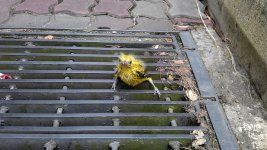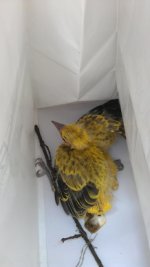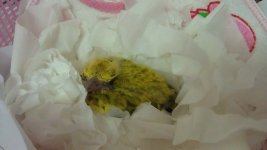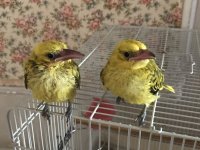Recently my family picked up an injured black-naped oriole and as it cannot fly, the vet persuaded us to keep it as a pet. (Edited to add: the bird will never be able to fly because a large part of its right wing is missing)
It is about 10 weeks old now (9 Oct).
I've tried searching online resources and my local libraries for information relating to black-naped orioles but I couldn't find any.
I'll very much appreciate advice!
Some of my questions are:
1. What is its lifespan?
2. What does it like to eat apart from worms?
3. Should I get it toys? What kind of toys does it like to play with?
4. How is its personality like - aggressive, friendly, loyal....?
5. Is it a noisy bird?
6. Any other info is very much welcomed.
And here is a picture of the dear bird when it first came:
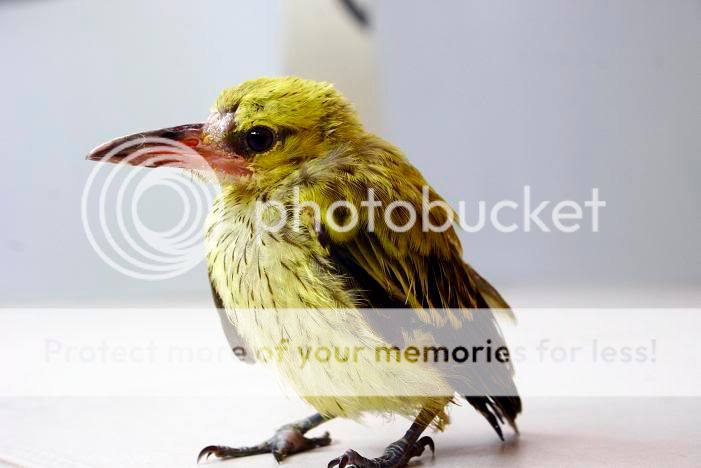
Here is a picture of the Oriole now. It's settling in very well and very happily into its new home!
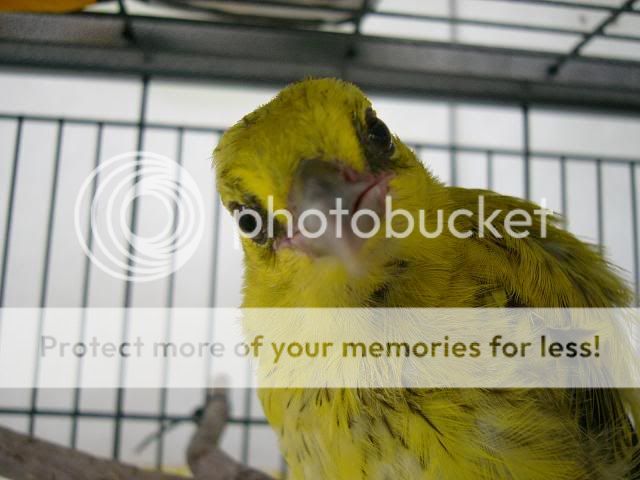
It is about 10 weeks old now (9 Oct).
I've tried searching online resources and my local libraries for information relating to black-naped orioles but I couldn't find any.
I'll very much appreciate advice!
Some of my questions are:
1. What is its lifespan?
2. What does it like to eat apart from worms?
3. Should I get it toys? What kind of toys does it like to play with?
4. How is its personality like - aggressive, friendly, loyal....?
5. Is it a noisy bird?
6. Any other info is very much welcomed.
And here is a picture of the dear bird when it first came:

Here is a picture of the Oriole now. It's settling in very well and very happily into its new home!

Last edited:






